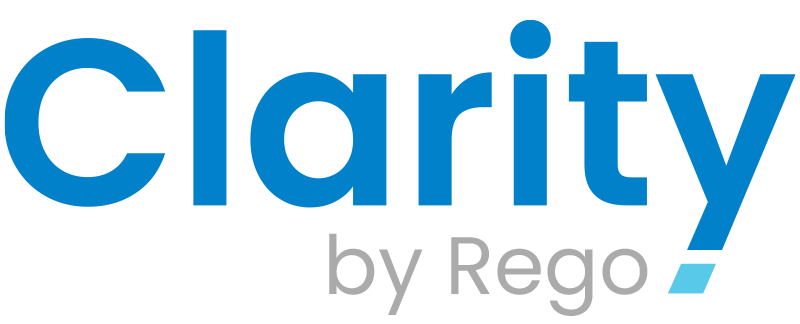by Clarity by Rego
Share
- Mastering OKRs: A Comprehensive Guide to Objectives and Key Results
- Understanding OKRs
- How OKRs Differ from Traditional Performance Metrics like KPIs
- The Benefits of Adopting an Effective OKR Framework
- A Brief History of OKRs
- Exploring Different Types of OKRs
- Best Practices for Creating Objectives and Key Results
- Scoring Methodologies for Achieving Your Company’s Goals
- Techniques for OKR Alignment
- Real-World Examples of Successful Implementation of The OKR Framework
- Conclusion
- Get Notified of Updates.

Organizations have big goals and tight timelines to implement them in. That’s where OKRs—Objectives and Key Results—come into play. This goal-setting framework is a true game changer, because it bridges the gap between ambitious ideas and actionable steps, providing a clear way to measure what really matters in an organization.
OKRs are more than just trendy terms; they play a crucial role in promoting focus and accountability. By clearly defining objectives (what you want to achieve) and key results (how you will measure success), organizations can reach their strategic goals faster.
This article explores the art of mastering OKRs. You will gain a deep understanding of this framework and how you can apply OKRs in your business. You’ll learn:
Understanding OKRs
Definition of an OKR
An OKR consists of two main components:
Objectives:
These are the big-picture goals that set a clear direction for the organization. Objectives should be ambitious yet attainable and inspire teams to rally around a common cause. For instance, an objective could be “Enhance customer satisfaction.”
Key Results:
These are specific metrics that gauge how well the objective is being met. Typically, each objective comes with 3-5 key results that provide a benchmark to track progress. Sticking with our example, key results could include “Increase customer feedback scores by 20%” or “Cut response time to customer inquiries by 50%.”
How OKRs Differ from Traditional Performance Metrics like KPIs
 OKRs and KPIs serve different purposes in tracking performance. While KPIs focus on specific, standalone metrics that show how certain areas are performing—like a snapshot of current health—OKRs take a broader approach, setting clear Objectives (what we want to accomplish) along with Key Results (how we’ll measure success). OKRs are designed to push for growth and transformation and are meant to be flexible, reviewed every month or quarter to keep pace with changing goals. KPIs, on the other hand, change less frequently and often look backward to give a steady read on ongoing operations.
OKRs and KPIs serve different purposes in tracking performance. While KPIs focus on specific, standalone metrics that show how certain areas are performing—like a snapshot of current health—OKRs take a broader approach, setting clear Objectives (what we want to accomplish) along with Key Results (how we’ll measure success). OKRs are designed to push for growth and transformation and are meant to be flexible, reviewed every month or quarter to keep pace with changing goals. KPIs, on the other hand, change less frequently and often look backward to give a steady read on ongoing operations.
OKRs encourage involvement from everyone in the organization, fostering a culture of engagement and accountability, while KPIs are typically set by upper management and may not engage employees feedback or tie to strategic goals. Understanding these differences can help organizations use OKRs effectively alongside other metrics like KPIs.
The Benefits of Adopting an Effective OKR Framework
Adopting a well-structured OKR framework offers advantages for organizations aiming to achieve high levels of efficiency and focus.
Improved Alignment
One of the key benefits of OKRs is improved alignment across teams. Clear, shared goals ensure everyone is working toward the same objectives, reducing duplication and focusing resources. It also helps prioritize—by saying yes to your OKRs, less valuable tasks naturally take a backseat.
A solid OKR roadmap (a high-level plan that outlines key objectives and results over a set period) makes this process even smoother by offering a structured way to set goals and track progress. With everyone clear on their roles and how they contribute to the OKRs, teams can collaborate more effectively, boosting productivity and delivering better results.
Inspired Innovation
One of the great perks of using an effective OKR framework is how it sparks creativity and fresh ideas. This is why most leaders turn to OKRs to help their growing organizations reach big goals. By setting clear objectives and measurable outcomes, teams feel empowered to think outside the box and pursue innovative solutions that might not have. This focus on pushing boundaries keeps everyone aligned with the organization’s vision and fosters a culture of continuous improvement, making it easier to adapt and grow together.
Boosted
Employee Engagement
A Gallup report found that teams with aligned goals experience 21% higher profitability, highlighting the importance of rallying employees around the company’s overall mission. The clarity offered by OKR objectives allows employees to see the impact of their work and feel a sense of ownership and accountability. Having clear objectives and key results helps employees not only understand what they are working toward, but also why they are working toward them.
Open Communication and Continuous Improvement
Additionally, the transparent nature of OKRs encourages open communication within teams, promoting a culture where feedback is valued and acted upon. This openness not only enhances team dynamics but also drives continuous improvement and innovation.
Using OKRs strategically helps keep every part of an organization in sync, driving shared success while boosting individual satisfaction. This holistic approach highlights the real purpose of OKRs: bringing people together around common goals to achieve transformative results.
A Brief History of OKRs
OKRs originated at Intel in the 1970s, under the leadership of CEO Andy Grove. Grove introduced OKRs as a way to improve clarity and focus within the company. The approach emphasized setting clear objectives alongside quantifiable key results, allowing teams to align efforts to reach their ambitious goals faster.
Key Developments in OKR History:
1. Intel’s Early Adoption
At Intel, OKRs were introduced to boost productivity and help teams track their progress effectively. This framework improved communication and prioritized objectives throughout the organization. A key success story was when Intel needed to sell a specific computer component to stay competitive. By using OKRs, the company focused its efforts and regained market share, showing just how impactful OKRs can be in driving results and aligning teams.
2. John Doerr’s Influence
In the late ’90s, John Doerr, who was a venture capitalist at Kleiner Perkins Caufield & Byers, played a crucial role in popularizing OKRs. A former employee at Intel, Doerr introduced this strategic framework to Google during its early years. His experience at Intel made him an advocate for OKRs’ potential.
3. Google’s Implementation
Google’s adoption of OKRs was transformative. Guided by John Doerr, who introduced the framework, Google set ambitious goals while maintaining transparency. Doerr emphasized in his book Measure What Matters, “Ideas are easy. Execution is everything.”
This implementation led to significant outcomes:
- Rapid Growth: Google scaled from a startup to a company with a market capitalization exceeding $1 trillion in two decades.
- Innovative Culture: The OKR system fostered innovation, enabling projects like Google Maps and Android.
- Alignment and Focus: By aligning goals across departments, Google improved collaboration.

These insights demonstrate how effective goal setting can drive performance and innovation, positioning Google as a tech leader.
Exploring Different Types of OKRs
Understanding the different types of OKRs and their applications can help you use them more effectively. Each type serves a unique purpose and can be leveraged to meet various organizational needs.
Committed (Baseline) OKRs
Committed OKRs form the backbone of operational success, providing a stable foundation for measuring performance.
Characteristics:
Realistic and Achievable: These OKRs are designed to reflect goals that are within reach, based on available resources and existing capabilities.
Clear Expectations: They set concrete expectations for teams, often aligning closely with traditional business objectives.
Examples:
Objective: Increase customer satisfaction by 10%.
- Key Result 1: Achieve an average customer service response time of under two hours.
- Key Result 2: Reduce customer complaints by 25%.
Aspirational (Stretch) OKRs
Aspirational OKRs are ideal when an organization aims to disrupt markets or drive substantial growth. They should be used when leadership wants to drive ambition and high performance.
Characteristics:
- Challenging and Ambitious: These OKRs push boundaries beyond current abilities, encouraging innovation and out-of-the-box thinking.
- Motivational: Designed to inspire teams to strive for significant achievements, even if they aren’t fully realized.
Learning OKRs
Integrating learning OKRs into your strategy empowers organizations to stay agile. They enable teams to quickly adapt to change while cultivating a culture of continuous innovation.
These OKRs prioritize experimenting with fresh ideas and gaining insights over hitting specific measurable outcomes. By focusing on learning and process enhancement they become valuable for driving innovation.
Characteristics:
- Exploratory Goals: Often involves testing new hypotheses or exploring unknown territories within the business landscape.
- Non-linear Progression: Success is not defined by conventional metrics but by insights gained during the process.
Best Practices for Creating Objectives and Key Results
To create meaningful OKRs, it’s important to take a strategic approach that makes objectives both inspiring and actionable. Here are some key tips for writing effective objectives:
Scoring Methodologies for Achieving Your Company’s Goals
Measuring progress is vital to OKR success. Doerr advises, “Measuring how you’re doing against your key results is really important for figuring out if your organization is on track to meet its goals.” He recommends reviewing OKRs both monthly and quarterly. There are several scoring methods you can use, each providing its own insights and advantages.
1. RAG Status Reporting
The RAG (Red, Amber, Green) status reporting is a simple yet effective way to visualize progress:
- Red: This means there are significant issues or risks that could prevent achieving the key result.
- Amber: This indicates that things aren’t complete, although progress is being made, but there are some challenges along the way.
- Green: This is the good news. Everything is on track and there are no major obstacles.
This approach works particularly well for teams that thrive on visual cues and need an easy way to share status updates across departments. For binary OKRs, you can use RAG, but it will be simpler: “Red” means the goal isn’t met, and “Green” confirms success. “Amber” may indicate ongoing progress toward the goal. This flexibility allows teams to adapt to the RAG framework while keeping communication clear.
2. Percentage Completion Rates
For those who prefer quantitative measures, percentage completion rates offer a more precise understanding of how much of the key result has been achieved:
- Assign a numerical value (0-100%) indicative of current progress.
- Regular updates help track incremental advancements and identify areas needing attention.
This method ensures accountability and drives data-driven discussions around performance and resource allocation.
3. OKR Grading System
A more detailed approach involves an OKR grading system where each objective and key result is scored on a scale (e.g., 0 to 1):
- 0.0 – 0.3: Little to no progress.
- 0.4 – 0.6: Moderate progress; room for improvement.
- 0.7 – 1.0: Excellent progress; exceeding expectations.
This scoring method helps teams understand not just if they are meeting targets but by how much, guiding strategic adjustments when necessary.
These methodologies, whether qualitative or quantitative, offer diverse ways to gauge success, ensuring that your organization remains aligned while fostering continuous growth and improvement.
Techniques for OKR Alignment
Aligning OKRs starts with setting clear, actionable goals that support the company’s broader objectives, giving everyone shared focus. Specific OKRs help teams understand their roles, while regular check-ins ensure collaboration.
John Doerr stresses an open culture, mentioning “If people have to be perfect, they’ll stop taking risks.” OKRs should motivate, not punish. Re-evaluating key results as goals evolve keeps OKRs relevant.
Doerr adds, “We use OKRs to plan, track progress, and coordinate priorities between teams,” helping everyone stay focused on critical objectives while avoiding distractions.
Post-it Note Technique for Visibility
A key part of Doerr’s OKR implementation is visibility. He encourages employees to write their OKRs on a post-it notes or piece of paper and keep them visible at all times. This easy practice ensures employees know their priorities and are aware of what others are working prioritizing too. When the OKRs are in sight, it reinforces collaboration and accountability, and helps employees support one another as they work toward their shared goals for example, if I were to see a co-worker’s OKRs, I may get an idea that may help them reach their key results.
Real-World Examples of Successful Implementation of The OKR Framework
Organizations have embraced the OKR framework to streamline operations and enhance performance. By reviewing these case studies on implementing OKRs effectively, you will gain inspiration and see how you can successfully use them as well.
Google Pioneers OKR Adoption
HubSpot Boosts Customer Loyalty with Clear OKRs
Netflix Drives Cultural Change with OKRs
These examples underscore the potential of adopting the OKR framework effectively. Understanding specific challenges and learning from these experiences is crucial for any organization striving toward implementing OKRs.
Conclusion
Embracing OKRs helps businesses create a culture of transparency and innovation, allowing them to reach their strategic goals. For organizations ready to tackle the challenge of OKRs, using advanced PPM solutions like Clarity by Rego can make the implementation process smoother.
To learn more about how to make the most of OKRs, John Doerr’s book, Measure What Matters, is a great resource full of practical insights. Don’t forget to explore our other resources to help you with successful OKR adoption!
STAY IN THE LOOP
Get Notified of Updates.
Stay ahead of the curve by subscribing to our newsletter. Get the latest insights, strategies, and tools delivered straight to your inbox, and empower your business to achieve more.

